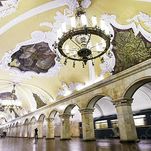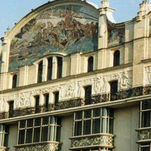Zamoskvorechye District
This is a guided tour around the “real” Moscow, showing the transformations of the city through time. After this unique and unusual tour you will understand how much Moscow has changed and what features it has preserved since the 18th century.
Zamosvorechye is an astonishing neighborhood of Moscow, which managed to preserve its 18th-century appearance despite having lived through the entire 20th century and Stalin-era transformations. It first sprang up across the river from the Kremlin (Zamoskvorechye literally means ‘past the Moscow River’), and has been around since the 13th century.
This is the rare case in the city when one particular area has preserved its low buildings (one-two stories), where merchants and artisans used to live.
Besides the famous Tretyakov Gallery, which is not located here by accident (the famous Tretyakov family of merchants and art patrons housed it in their own home), the neighborhood has multiple churches, the unique Kadashevskaya sloboda (17th century), and the Convent of Martha and Mary (1909). This one was founded in the age of Art Nouveau, and took on the patterns prevalent in spiritual architecture. The Pokrovsky Cathedral was built by a young architect, Aleksey Shchusev (who then built Lenin’s Mausoleum), in the Art Nouveau style, which is a rare exception for an Eastern Orthodox church, not to mention how the church was painted by Mikhail Nesterov, a self-taught artist who made noncanonical versions of Eastern Orthodox frescoes.
The narrow streets and the fact that popular guidebooks rarely mention Zamoskvorechye mean that large groups of tourists on buses do not go through the neighborhood, making it a truly authentic area.































